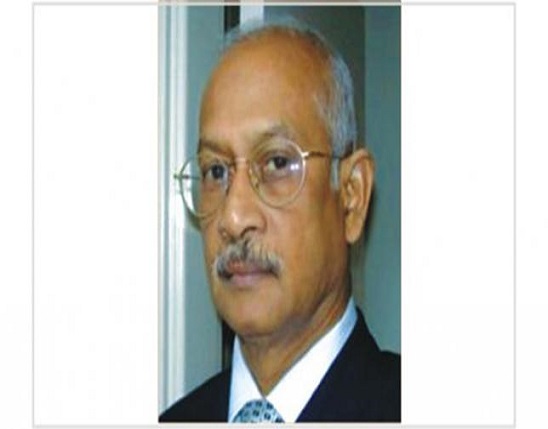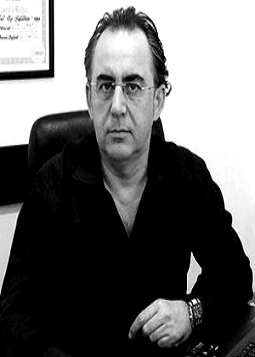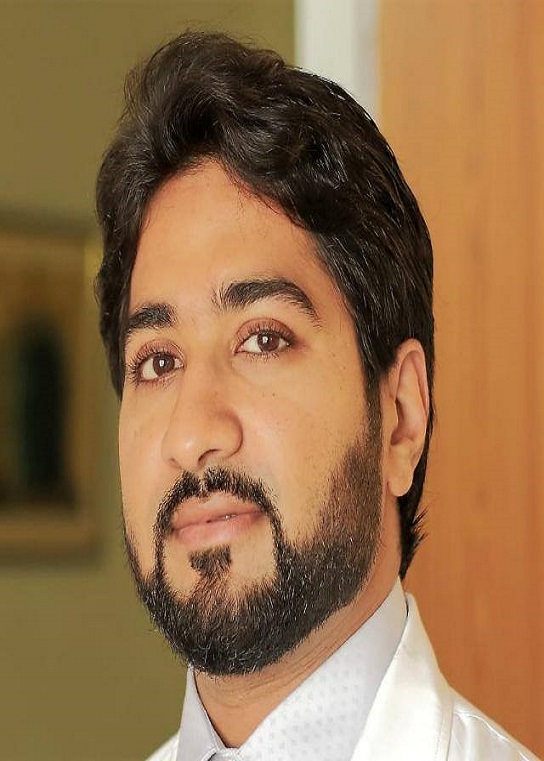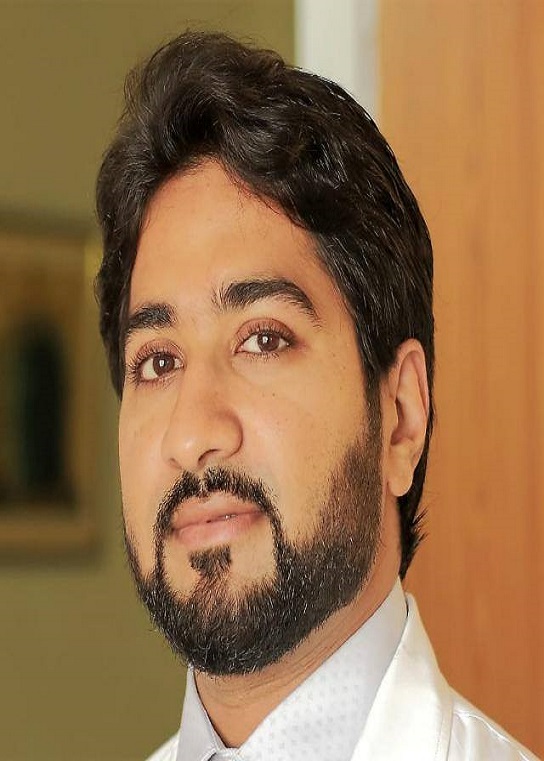Scientific Program
Keynote Session:
Oral Session 1:
- Plastic Surgery | Reconstructive Surgery | Cosmetic Surgery | Craniofacial Surgery
Title: Better technique for sex reassignment surgery
Biography:
Golam Rahman is a Professor in the department of Mass Communication and Journalism, University of Dhaka, Dhaka 1000, Bangladesh Part-time: Professor, Journalism and Mass Communication; and Dean Faculty : Humanities and Social Sciences, Daffodil International University, Dhaka, Bangladesh.
Abstract:
Bangladesh is a densely populated country.A lot of transgender people are leaving in the village as well as urban areas.usualy they leave in a cofined area.They want a reassign surgery for their genital organ.I have used different techniques for reconstruction of the genital organs.
Actually a new vaginal canal is made.It is covered with;
1.fullthickness graft,
2. Spontaneous reepithelization,
3.using muscles
4.using part of the colon, etc.
Methods: I used spontaneous reepithelization methods in most of the cases (about 400 cases). Considering shortage of facilities ,I used the simple methods.
Complications: some cases (10)came with pinhole meatous of urethra,14 cases came with shortness of vagina.
Conclusion Considering shortage of facilities,it is difficult to do complicated methods, simple method worked well in most of the cases.we want to discuss for better methods.
Title: Aesthetic and functional result of crooked nose treatment; internal microperforating osteotomy and subtotal septal reconstruction
Biography:
Hadi Nural was graduated from ISTANBUL Universty Medical Faculty in 1989. He started ENT training same year in Haseki Training and Research in Ä°stanbul. He graduated with” Snoring and Sleep Apnea Surgical Treatment Results and complications” topic thesis in 1993. He interested in Rhinoplasty and Facial Plastic Surgery. He attended a lot of meeting and course in this field in Europe and USA. He moved Antalya in 1997 and established Antalya’s first ENT center called ENT-MEDÄ°FACE. He has been still working and partner of Mediface Surgical Centre. He is lecturing in national and internaional meetings about surgical and nonsurgical facial treatment. Our innovation technic in crooked nose treatment ‘’ Aesthetic and functional result of crooked nose treatment; internalmicroperforating osteotomy and subtotal septal reconstruction’’ is published in European Journal of Plastic Surgery and presented at Annual meeting of the European Facial Plastic Surgery 2019 in Amsterdam. His main interested surgery is primary and secondary rhinoplasty, Facial plastic Surgery and he has over ten thousands rhinoplasty experiences.
Abstract:
Background
Crooked nose is mostly characterized by a deviation of both the bony and the cartilaginous parts of the nose. In order to obtain proper functional and improved aesthetic results, both of these parts have to be corrected. Objectives
The objective of this study is to evaluate the aesthetical and the functional results by correcting the bone pyramid through internal microperforating technique and the cartilaginous part through subtotal septal reconstruction technique.
Methods
The medical records of 158 patients who have undergone through primary septorhinoplasty for crooked nose treatment during the period of 21.06.2016 and 31.07.2017 have been reviewed. Functional results have been evaluated using NOSE scores and the aesthetical results using ROE scores. The observation times have been arranged as preoperatively, 6 months-1 year (Group 1) and 1 year-2 years (Group 2).
Results
Septorhinoplasty has been performed on 158 patients with crooked nose. Out of this number 104 of the patients ( 65,8 %) were women and 54 were males (34,2 %). Average age of the patients was 31,59 (9,3 %) all of who have undergone through this procedure. There was a significant improvement in the NOSE and the ROE scores of Group 1 and Group 2 and statistically significant
Conclusion
In crooked nose treatments, correction of the deviated bone pyramid using internal
microperforating osteotomy and correction of the severe deviated septum using
subtotal septal reconstruction yields improved functional and aesthetic results.
Title: Implications of neovascularisation in perforator based fasciocutaneous flaps of lower limb.
Biography:
A renowned cosmetic surgeon, Dr. Neeraj Kant Agrawal in Bhu has been making a mark in the field through implementation of advanced skin treatments and sophisticated surgical techniques. This medical professional has been contributing towards the society by bringing revolutionary changes in the lives of many people through commendable skin treatments. The clinic is strategically located in Bhu with the exact address being Dept.Of Plastic Surgery, Ims, right . Accessing the chamber is a piece of cake for the citizens owing to its favourable location in an area which enjoys a great connectivity with the rest of the places. Clients can conveniently get their way back with the help of local transports that has a frequent service in this particular locality.
Abstract:
Flap harvest depends on relevant vascular anatomy. The various perforators that vascularize the flaps undergo certain changes following transfer as compared to the normal vascular arcade. The planning and survival of the flaps following transfer depends on mapping and imaging these system of perforators either by CT angiography or MR angiography. Perforators of the concerned vascular axis were identified and their course was studied in great detail in the lower limb.
OBJECTIVES
To find out the rationality of various pedicled flaps regarding their vascularity, to analyse the vascular changes in the flap after its transfer, to employ imaging to augment our existing knowledge of perforators and axial vessels and to ascertain tentative timing of neovascularization following transfer and safe ligation of vascular pedicle.
MATERIALS AND METHODS
30 patients having soft tissue defects of different etiology below the knee of either lower limb were studied. Comorbidities which could adversely affect the vascularity of flap were taken into account and exclusion criteria were defined. Detailed vascular structure was studied by CT Angiography marking the perforators from the main vessel namely the posterior tibial artery, peroneal artery and reverse sural axis. The perforators were confirmed by audio doppler signals. The diagnostic modalities were also used to study the neovascularization from various perforators of the leg. The preoperative and postoperative study was carried out at 10th day. The axial vessel and its perforators were evaluated and signs of neovascularization were looked for.
RESULTS
Results of variables studied on CT angiography were the number of perforators which was 3.47±1.34 (range 1-6), malleolus to the distalmost perforator distance which were 7.8±4.91 cm (range 5-13 cm) and size of perforators averaging 1.59±0.36mm (range 1.1-2.2mm). In 21 out of 30 patients (70%), the neovascularization and subsequent survival of the flap was complete by 10 days as demonstrated by radiology. Rest of the patients took longer.
CONCLUSION
Neovascularisation is complete by 10 days and therefore fasciocutaneous flaps may lose dependency on their vascular pedicles in the short term following transfer, developing alternative pathways for vascular supply and ultimately survival. The vascular pedicle can be safely ligated after 10 days in selected subset of patients.
Title: Role of autologous fat grafting in improving the quality of scars due to various etiologies.
Biography:
Ali Adil Mahmud is a Professor in Aligarh Muslim University, India. His Specialization is in Plastic and Reconstrauctive Surgery.
Abstract:
Introduction
Scars have plagued the psyche of mankind for generations, and various methods like lasers, scar revision, chemical peels etc have been described. Recently a renewed interest in autologous fat grafting has emerged after it is known that fat is rich in Adipose derived stem cells and mesenchymal stem cells which have a role in wound healing and scar remodelling.
In this study we describe the effects of fat in scar remodelling.
Materials and methods
This was a prospective study over a period of 3 years, patients with scars due to various etiologies were admitted and fat grafting done by the Colemans technique. Results were tabulated on the basis of the POSAS scores.
Results
A total of 40 patients were admitted in this study, the average volume of fat injected was 11.3+/- 7.2 cc, with most patients undergoing one sitting of the procedure. There was a significant change p<0.05 in the POSAS variables (Thickness, Rigidity, Pliability, Surface Area, Contour abnormality, Overall and the Total Score), while the variables of Vascularity and Pigmentation did not show a significant change p > 0.05
Conclusion
Autologous fat grafting is a safe and reliable method in improving the quality and texture of scar tissue.
Title: Percutaneous Collagen Induction (microneedling) in non-atrophic scar management: literature review
Biography:
Christos Iosifidis is a year 4 medical student at Barts and the London SMD. He took a year off medical school to complete his intercalated BSC degree in Biomedical Engineering at the age of 24 years from Queen Mary University of London. Since then he has developed a keen interest for Plastic and Reconstructive Surgery. For the past year, he has been working on a literature review study for microneedling techniques used in non-atrophic scar management with the guidance of Mr. Goutos I. FRCSEd(Plast), MSc Burn Care, Locum Plastic Surgery Consultant
Abstract:
Introduction Percutaneous collagen induction (PCI) or needling techniques are increasingly popular in aesthetic practice. The underlying mechanisms of action rest on producing a pattern of non-ablative and non-confluent puncture wound pattern to the dermis with a resulting regenerative effect on the skin. The majority of publications in the scar literature focus on the use of PCI in the context of atrophic scars with no currently available summative reports appraising the pertinent evidence relevant to non-atrophic scars.
Methods A detailed English literature review was conducted using PubMed Medline, Embase and Web of Science; the manuscripts were appraised and classified according to the Joanna Briggs Institute Levels of Evidence. Results are presented in descending order of evidence.
Discussion On the basis of level 1 evidence currently available, the combination of needling and silicone gel can improve the short-term pliability, height and vascularity of hypertrophic and keloid scars. According to level 2 evidence, needling alongside spray keratinocytes can produce a statistically significant improvement to patient/observer scar ratings and improve pigmentation in hypopigmented burn scars at 12-month follow up. Results from mixed cohort studies also point towards needling having a beneficial effect on fat graft retention. Level 3 data suggest that needling can render significant resurfacing effects to both mature and actively hypertrophic burn scars at 12-month follow up based on objective scar scales; furthermore, favourable histological changes are seen including better collagen alignment in the dermis and thicker epidermal layer. A number of level 4 studies reinforce the promising role of needling in the resurfacing of both mature and actively hypertrophic scars.
Conclusion Needling techniques are promising adjuncts to non-atrophic scar management. Further research with long-term follow up and comparative design protocols incorporating other resurfacing modalities is warranted before the exact value of needling is delineated in scar management protocols.
Keywords: percutaneous, collagen, needling, scar, hypertrophic, keloid
Title: Emergency surgery and trauma surgery in Cherkasy, Ukraine: solutions in a challenging environment
Biography:
Serhii Mitsuk, General Surgeon, Emergency Hospital of Cherkasy,Ukraine
WORK: Oct 2014 – To present in “Emergency Hospital of Cherkasy” as General Surgeon
Establishing the diagnosis and treatment; Determining the tactics of the patient in accordance with established rules and standards; Appointing and supervising appropriate treatment; Responsibility for continuity of care for patients on the ward; Performance of all the duties of the general surgeon and execution of urgent operations; Various types of surgeries in the field of emergency surgery and trauma; Patients’ medical care and patients’ management; Urgent decision making as a leader when trauma or emergency surgery; Lecturing and organizing lectures and conferences for doctors and interns in hospital; Organization of Surgical unit work while having lots of patients;
Abstract:
Ukraine is a young independent country in central Europe. For a long time this country has occupied by Russian Imperia and USSR. That’s why medicine in Ukraine has a lot of problem now. First of all these problems are related with emergency medicine and trauma. Cherkasy emergency hospital works 24-hours a day and 365-days a year and of course has a lot of patients with abdominal and thoracic injuries. Without modern equipment or laboratory, we always find a way to do our best. Now reform in medical is going but not all doctors and administrations want changing. Only fresh mind and international studying can help to be like better in medicine.
Title: In pursuit for the “ideal†free flap in diabetic foot reconstruction.
Biography:
Ali Adil Mahmud is a Professor in Aligarh Muslim University, India. His Specialization is in Plastic and Reconstrauctive Surgery.
Abstract:
Introduction
Diabetic foot ulcers have troubled surgeons for generations and still continue to do so. Setting a balance between adequate wound healing, maintaining joint movements and wearing foot wear are some of the ideal end points of surgery.
With the advent and proven safety of free flaps the plastic surgeon is equipped with a unique armamentarium to treat these problematic wounds.
Various free flaps have been described with various advantages and disadvantages ,in this study we analyse why free gracillis muscle transfer is one of the most “ideal” free flaps in diabetic foot ulcers.
Materials and methods:
This is a retrospective study done over a period of 2 years. A total of 37 patients with diabetic foot ulcers were operated by a single surgeon. Total operation time, wound healing, donor and recipient site complications and ability to wear footwear were recorded.
Results:
The majority of patients were male. 12 patients had wounds on the dorsum of foot, 10 on the fore foot, 8 on the ankle and 7 patients had ulcers on the sole of foot.
There was complete flap take in 30 patients, partial flap loss in 5 and complete flap loss in 2 patients. The average operation time was 180+/-35 minutes, with minimal donor site complications and no repeat procedure was required in the majority for footwear adjustment.
Conclusion
Gracillis flap can be considered as an “ideal” free flap in small to medium sized diabetic foot ulcers.
Title: Postoperative changes after new surgical method of hernia repair: Sonography and CT in assessment of intervention area
Biography:
Abatov Nurkassi deals with the scientific problem of comparative study of the effectiveness of traditional and laparoscopic operations in various pathologies of the abdominal cavity organs. The well-known and developed original methods of surgical interventions on the abdominal organs, retroperitoneal space and the anterior abdominal wall have been mastered. Direction of scientific interests: surgery, urology, endovideosurgery, the introduction of new technologies of surgery in clinical practice, biomaterials, information technologies in medicine, innovative teaching methods in medical education.
Abstract:
Statement of the Problem: a new non-mesh tension-free method of inguinal hernia repair is developed. This surgical technique based on displacing of aponeurotic flap from the sheath of rectus abdominis muscle moved on the pedicle for plastics of the posterior wall of the inguinal canal. The aim of study was to evaluate early postoperative changes of intervention area using sonography and computer tomography.
Methodology & Theoretical Orientation: The new method was applied in 15 patients, the control group consisted of 15 studied, operated on Liechtenstein method. All patients were examined by ultrasound of the inguinal-scrotal areas (state of blood flow in the arteries of the spermatic cord) and CT before surgery, 7 days and 1 month after it.
Findings: In the period of 1 month after operation, the improvement in the average value of the blood flow velocity in the artery of the vas deferens was: control - by 1.7±1.6 cm/s; the test group - 1.7±1.1 cm/s; in the testicular artery: control group - by 2.5±1.4 cm/s; the test group is 2.5±1.6 cm/s higher than before the operation. In the control group, an inflammatory process surround of a mesh 6.5±2.5 mm was fixed. These indicators were absent in patients of the test group. According to CT data, in terms of 1 week after surgery, there was a decrease in the density of soft tissues in the test group of 27.5±17.5 HU, at the control group – 25.1±20.9 HU, which confirms the greater severity of inflammation with the presence of a liquid component in the control group.
Conclusion & Significance: The developed a new non-mesh tension-free method of inguinal hernia repair is not inferior to Liechtenstein hernioplasty in restoring blood flow in the early postoperative period, but is characterized by a less pronounced of inflammatory response.
Title: Rhinoseptoplasty: Evaluation of the Morphological, Functional Outcome and Patient Satisfaction A homogeneous series of 150 cases
Biography:
Achraf Khairi, young Plastic Reconstructive and Aesthetic Surgeon in University Hospital avicenne of rabat- kingdom of morocco.
Abstract:
This is a retrospective satisfaction study of 150 patients between January 2015 and January 2018 by 4 senior operators of the Maxillofacial Surgery and Stomatology and Aesthetic Surgery Department of the HMIMV of RABAT.
This study is organized around: The evolution of the psychological profiles of patients in the pre- and post-operative period:
Observation of the longitudinal effect of rhino-plastic surgery on quality of life, self-esteem and image of the body as well as the quality of the hospital stay and care provided by caregivers.
Satisfaction of the senior operator with the results obtained, the choice of techniques and the improvement of the gestures.
This evaluation is an approach that makes it possible to guarantee to each patient the assortment of diagnostic and therapeutic acts that assure him the best result in terms of health.
Title: Inguinal hernia: a new non-mesh tension-free method of surgical treatment
Biography:
Badyrov Ruslan has experience in the treatment of surgical diseases of the abdominal cavity and the anterior abdominal wall. For 5 years, he has been actively studying modern methods of abdominal wall reconstruction, as well as introducing new ones. He is a co-author of the invention - a new biological implant based on the extracellular bovine-derived peritoneum matrix for abdominal wall defects repair (Patent of the Republic of Kazakhstan), is actively working on the use of biological implants for abdominal wall reconstruction.
Abstract:
Statement of the Problem: Recurrences have been a significant problem following hernia repair. Prosthetic materials have been increasingly used in hernia repair to prevent recurrences. However, synthetic endoprostheses have disadvantages, which include: aseptic inflammation in the surrounding tissues with the formation of a pronounced connective tissue scar; low resistance to the infection; high risk of adhesions between the abdominal organs and the mesh. The aim of study was to create a new method of inguinal hernia repair, not using synthetic mesh.
Methodology & Theoretical Orientation: Our new method of autoplasty of the posterior wall of the inguinal canal based on cutting out the aponeurotic flap from the sheath of rectus abdominis muscle, and moving it on the under spermatic cord, followed by fixing it to the pubic tubercle, inguinal ligament, medial – rectus, internal oblique and transverse muscles of the abdomen (figure 1). In this study, 15 new non-mesh tension-free inguinal hernia repairs were performed. The main outcome measure was recurrence in the early postoperative period (before 30 days).
Findings: Inguinal hernia was indirect in 60% of cases (9 patients), direct in 40% (7 patients). Mean patient age was 47.3 years (range, 18 – 75). Follow-up was completed in all 15 patients (100%) by clinical examination or phone call. Small seroma formation in 1 patient was observed in 5th day, but not requiring drainage. We have not observed acute infection, hematoma formation or functional or organic changes in the spermatic cord related to the new technique of hernia repair.
Conclusion & Significance: The above-described method ensures the proper strength of the posterior wall of the inguinal canal, preserves the physiological function of it after operation. The use of this technique has a big potential in the inguinal hernia repair, since it can eliminate all complications associated with the use of synthetic material.











